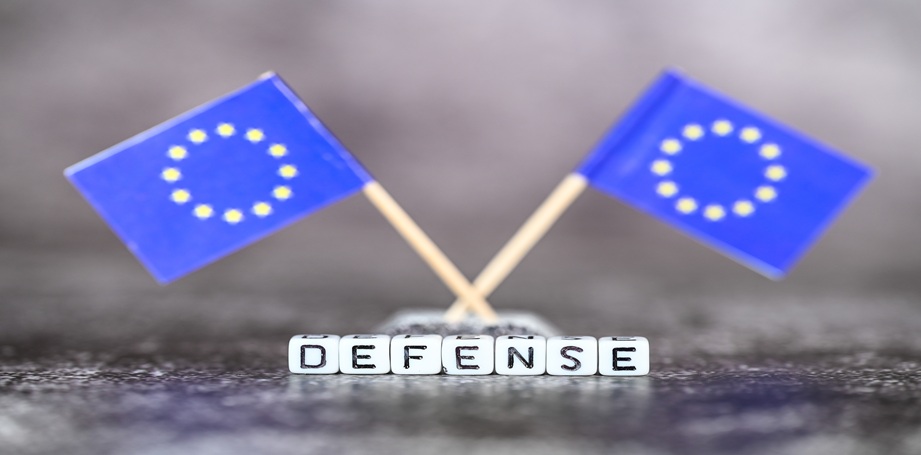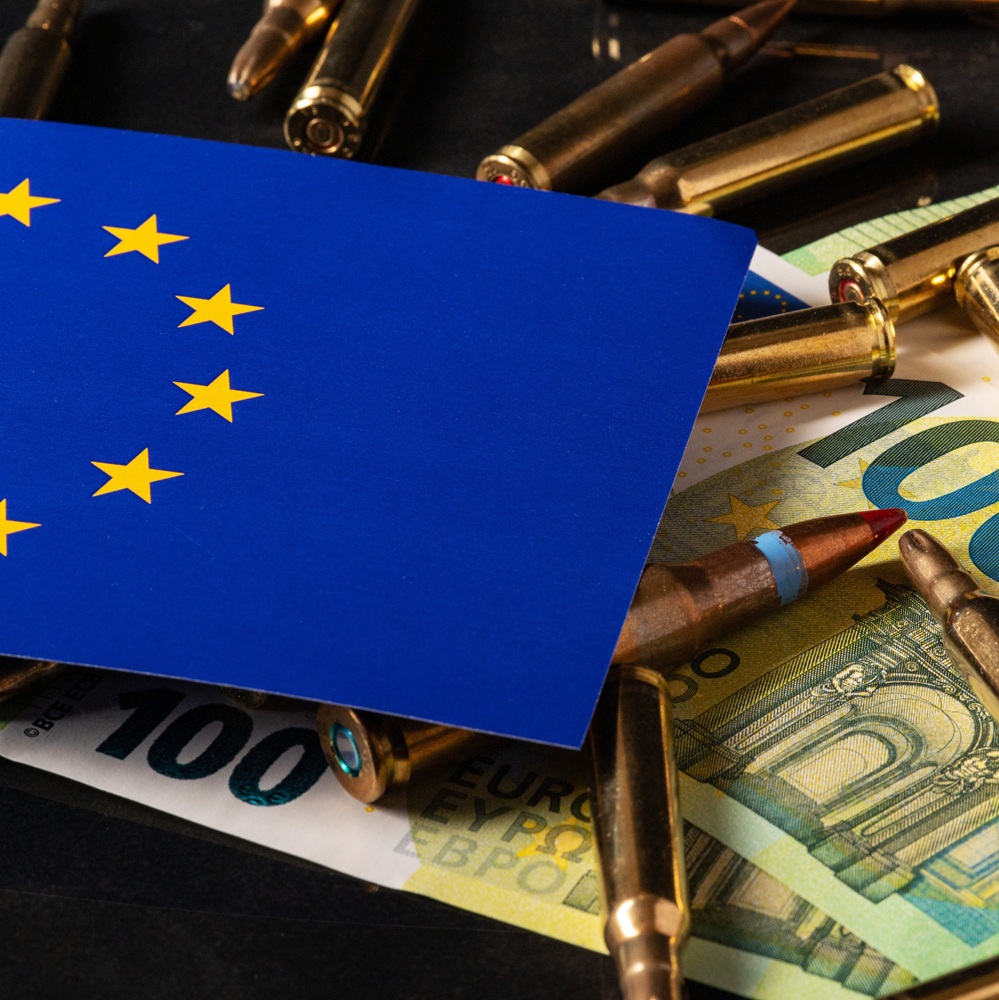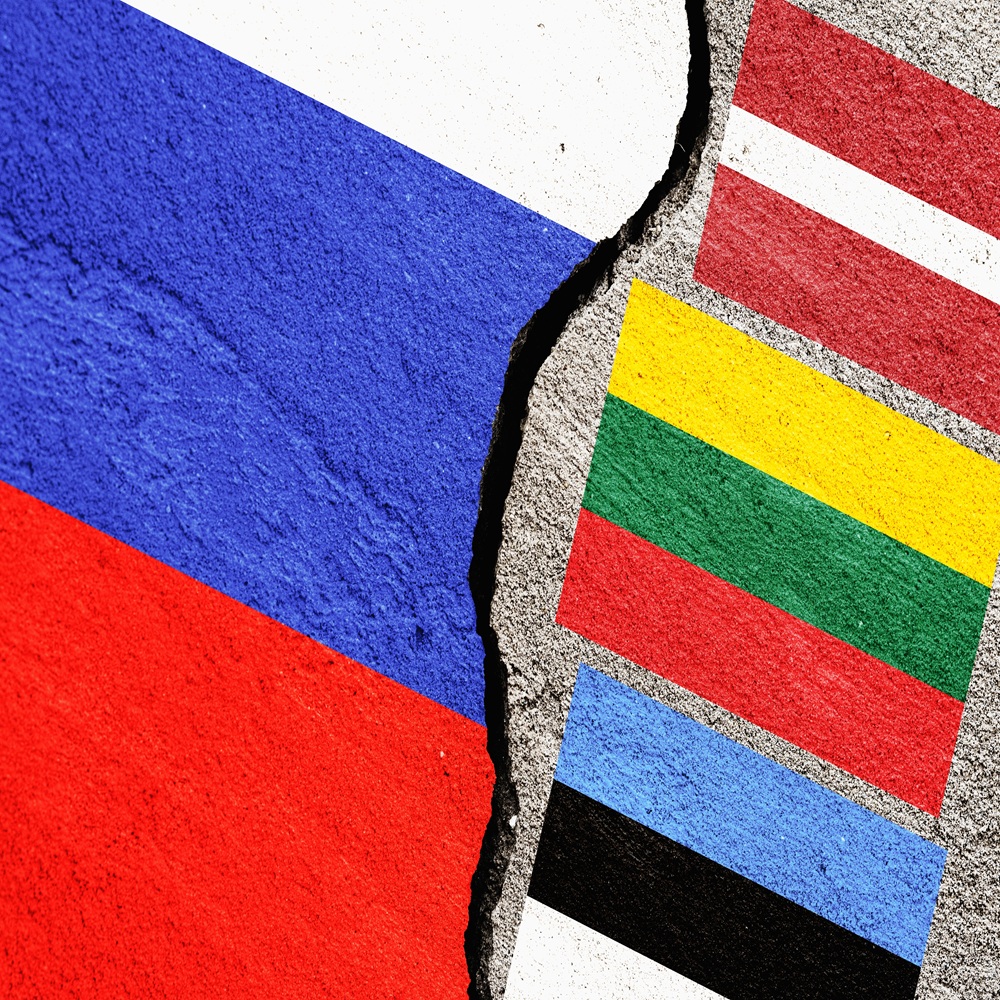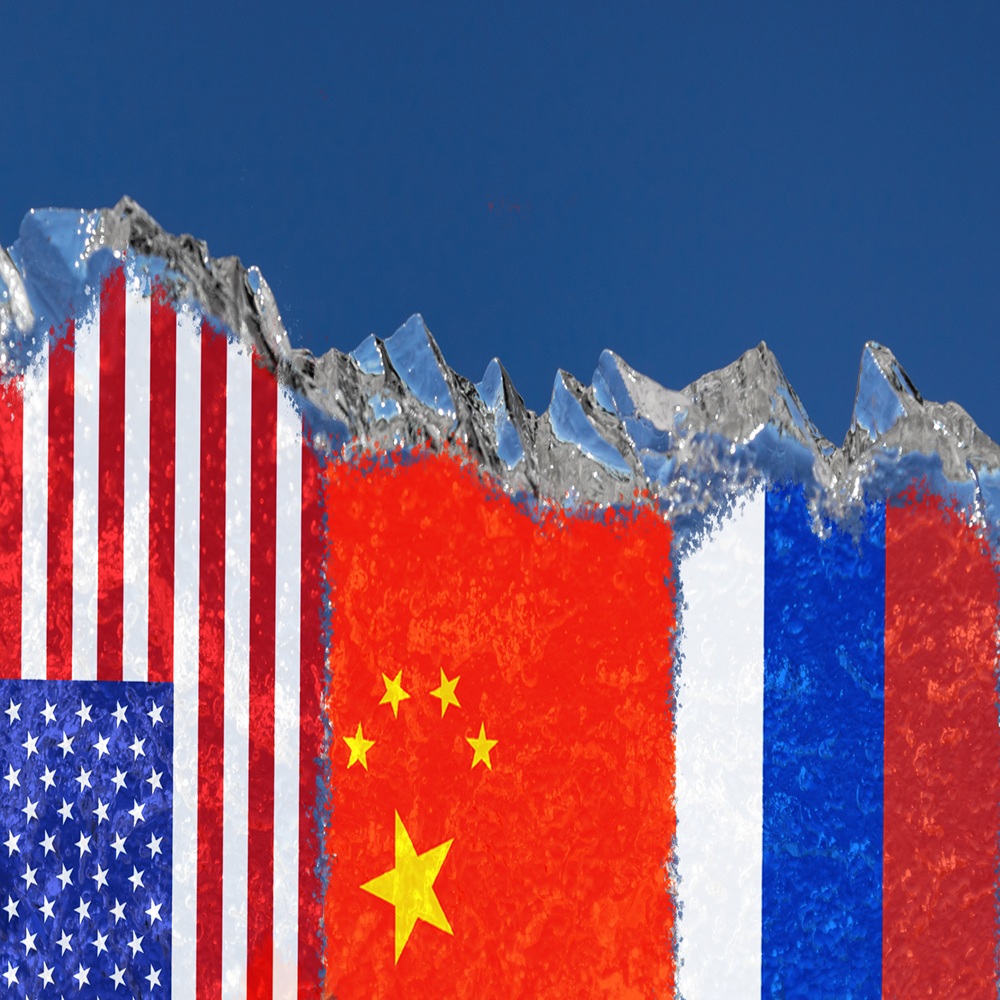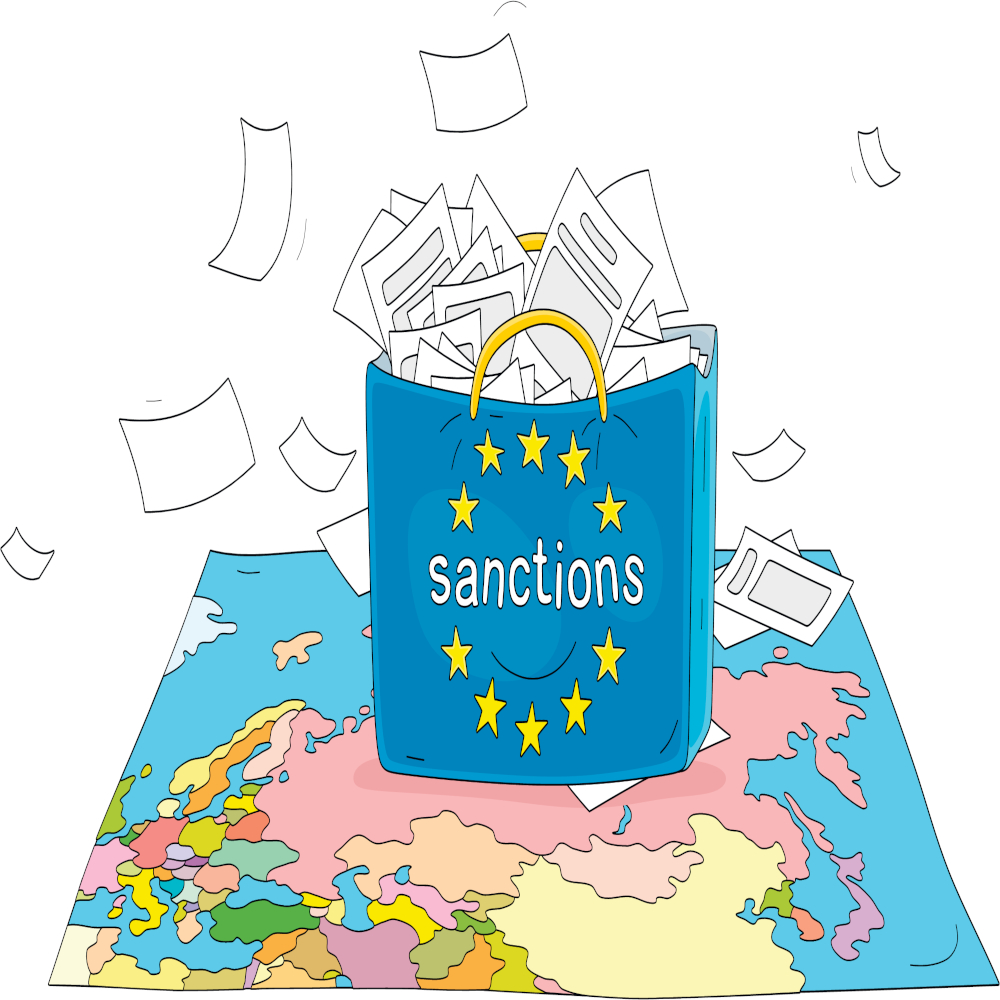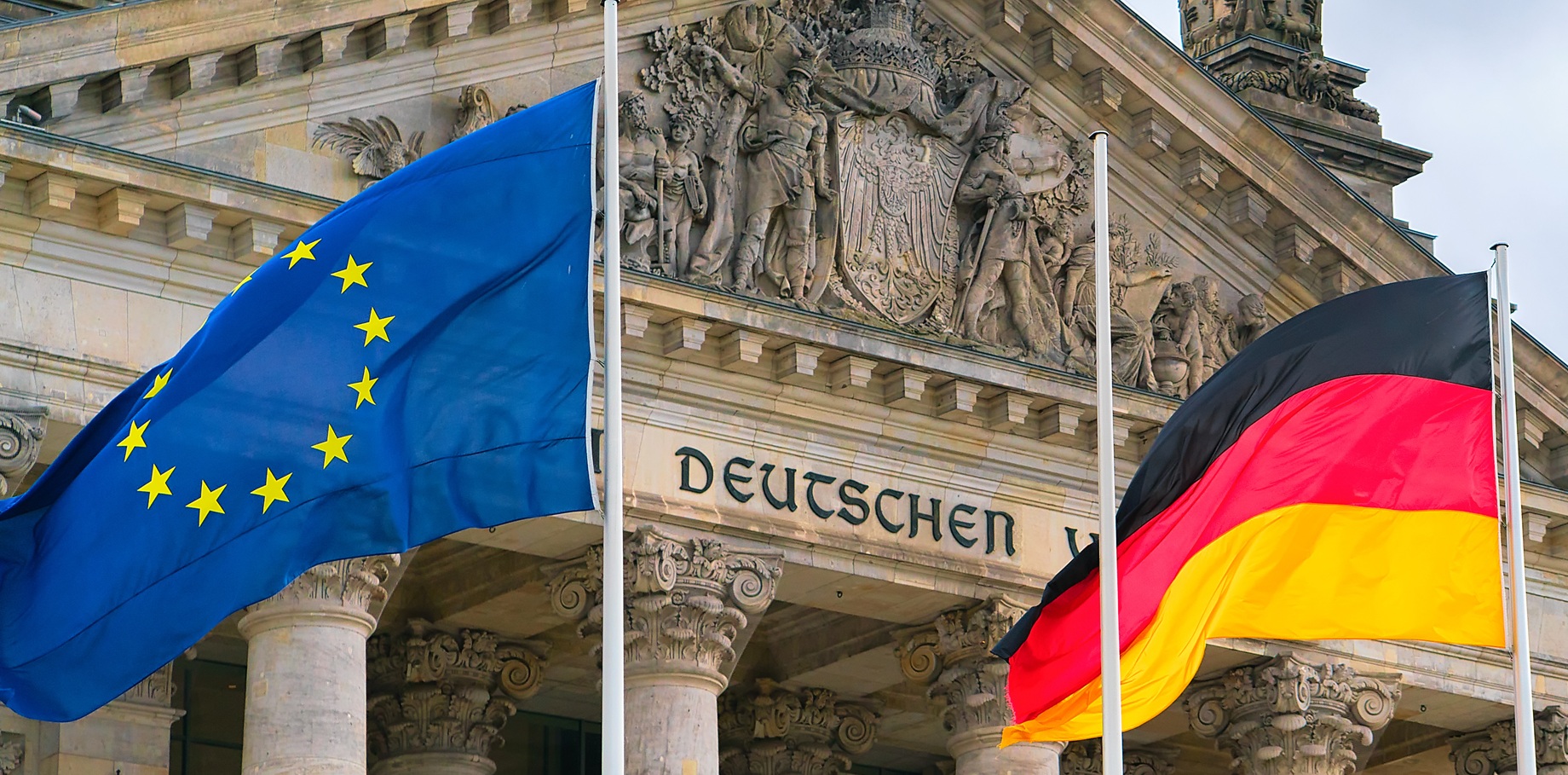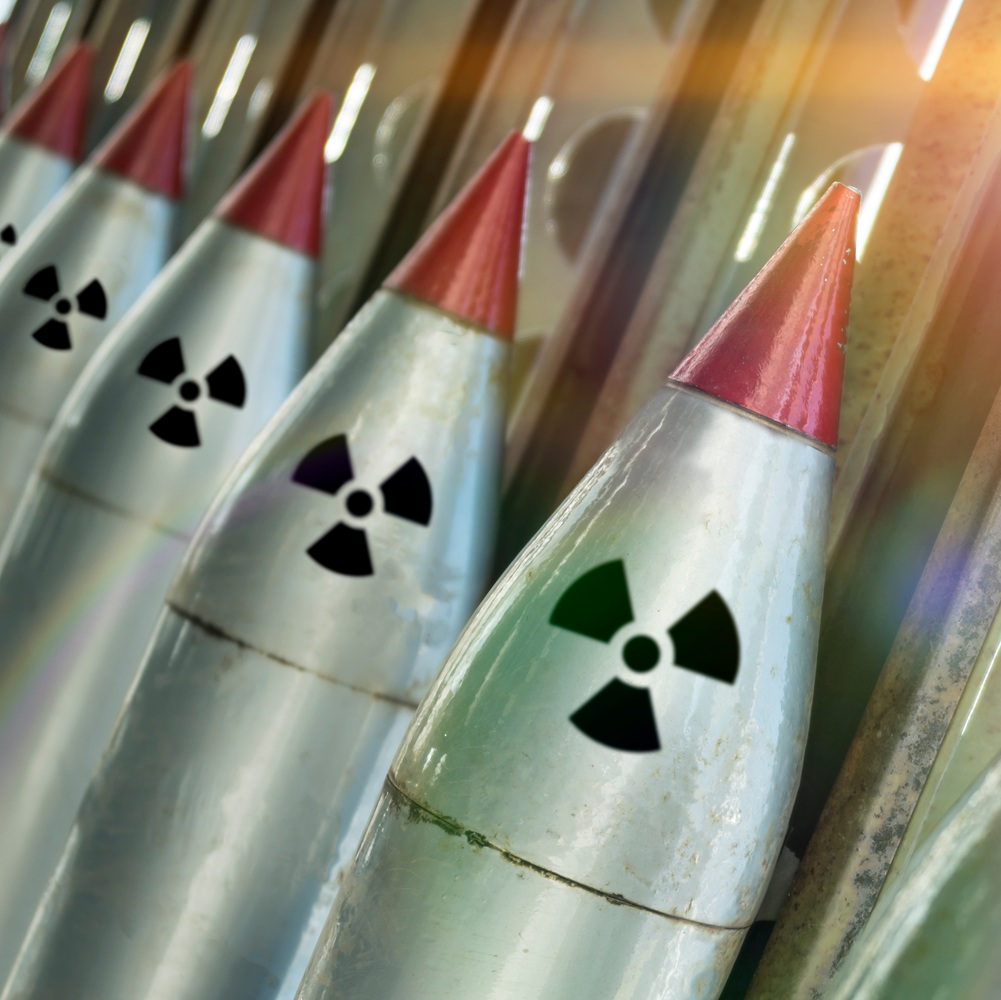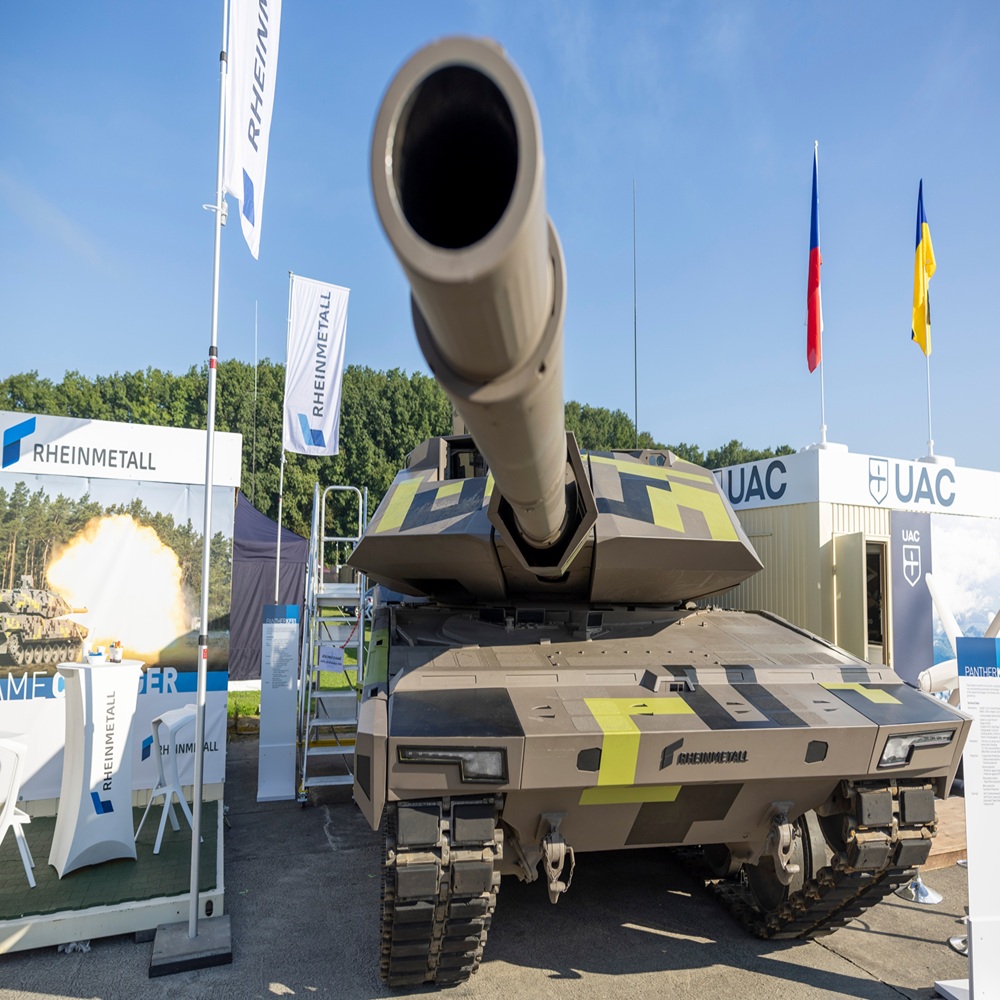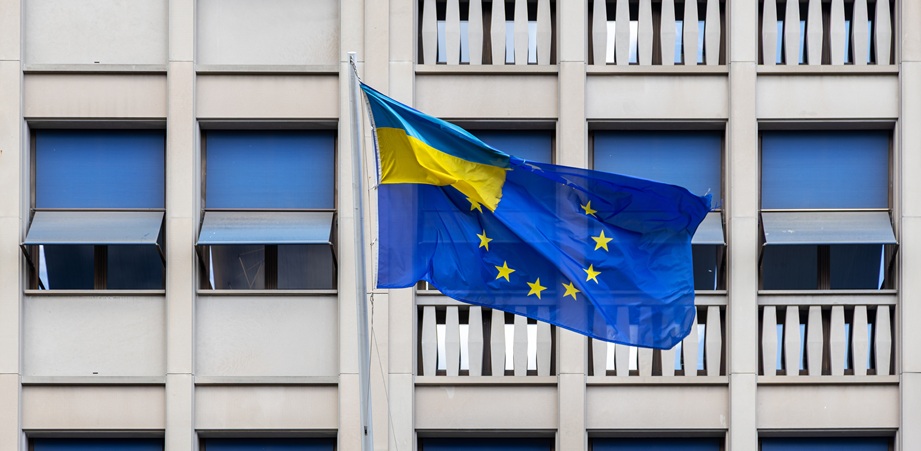
Can SAFE make Europe safe? The Integration of Ukraine into European Defence Cooperation Efforts: Challenges and Opportunities.
by Krzysztof Śliwiński
Abstract This analysis examines Ukraine’s integration into European defence cooperation through the SAFE fund, highlighting its unique status as a semi-integrated security partner (SISP) despite not being an EU member. Ukraine’s pursuit of NATO and EU membership is driven by security concerns, economic benefits, and cultural alignment with Europe, particularly in response to Russian aggression since 2014. NATO membership promises collective defence under Article 5, enhanced military capabilities, and political reforms, while EU accession offers economic integration, governance improvements, and strengthened defence capacities. Russia opposes Ukraine’s NATO aspirations due to security fears and the potential democratic contagion threatening its regime. Still, it is more accepting of Ukraine’s EU membership, viewing it as an economic rather than a military alliance. Historical assurances to the USSR against NATO expansion eastward fueled Russia’s objections. Ukraine’s integration into European structures symbolises a break from Russian influence but poses challenges of escalation and geopolitical tension. The SAFE fund’s inclusion of Ukraine reflects the evolving boundaries of EU defence cooperation amid the ongoing conflict. Key Words: SAFE, EU, Ukraine, Russia, Security Introduction In the first article on SAFE[EE1] , published once again in the World & New World Journal, the analysis concluded on a somewhat skeptical note: “It appears that despite some initial intentions to end the Ukrainian war as early as April 2022, it is the European elites, especially French, German and Polish, who stand for the prolongation, if not escalation, of the Ukrainian war, potentially at the expense of the security of the whole European continent and definitely at the expense of Ukrainians and their country”.[1] Moreover, the author, adopting a critical perspective, raised some questions about the consequences of the ongoing war. Firstly, the longer the war continues, the more destroyed Ukraine becomes and the greater the number of Ukrainians killed. Secondly, the longer the war continues, the greater the likelihood of escalation, which poses a threat to the entire European continent. Thirdly, despite mainstream media reports, the Russian Federation appears to have adapted to operating effectively despite the sanctions, which may strengthen its economy in the short to medium term and, more importantly, bring it closer to cooperating with China and North Korea. Finally, since every war serves as a testing ground for new technologies, the Russians, especially the North Koreans and the Chinese, are gaining invaluable insight into the nature of modern warfare, which is often referred to as the next Revolution in Military Affairs (RMA).The inclusion of Ukraine in the SAFE fund, despite its non-EU status, suggests a functional military alliance. This analysis will, therefore, explore how such an alliance redefines the line between EU and non-EU defence cooperation, specifically in the context of Ukraine as a semi-integrated security partner (SISP), and how this semi-integration is likely to influence Russia’s threat perception. European Aspirations of Ukraine Source: https://www.freeworldmaps.net/europe/political.html Ukraine’s pursuit of NATO and EU membership reflects a complex approach driven by security, economic, political, and cultural imperatives, particularly in the context of its ongoing conflict with Russia and its aspiration for a stable and prosperous future. Ukraine’s engagement with NATO began in the early 1990s, with formal steps toward membership marked by the 2008 Bucharest Summit, which decided that Ukraine would become a member.[2] This commitment was reaffirmed at the 2024 Washington Summit, emphasising Ukraine’s “irreversible path” to NATO integration. For the EU, Ukraine applied for membership on February 28, 2022, shortly after Russia’s full-scale invasion, highlighting the urgency driven by security concerns.[3] The EU granted candidate status in June 2022, and accession negotiations opened in December 2023, reflecting strong political support. The primary rationale for NATO membership is security, particularly in response to Russia’s actions since 2014, including the annexation of Crimea and the 2022 invasion. Ukraine views NATO’s collective defence mechanism, especially Article 5, as a credible deterrent to further aggression. NATO has provided significant support, including EUR 50 billion in 2024, with nearly 60% of the funding coming from European Allies and Canada. The alliance has also established NATO Security Assistance and Training for Ukraine (NSATU) at the 2024 Washington Summit.[4] EU membership, although not primarily a military-focused endeavour, enhances political stability by reducing vulnerability to external threats through economic and diplomatic ties. Recent developments in June 2025, such as NATO Defence Ministers agreeing on new capability targets and statements from Baltic states calling for concrete steps at the upcoming 2025 NATO Summit in The Hague, underscore ongoing international backing.[5] However, challenges remain, with some ambiguity about explicit mentions in NATO communiques and concerns over U.S. political shifts, as noted by Estonian President Alar Karis on June 9, 2025.[6] EU membership is central to Ukraine’s economic aspirations, offering access to the European single market, financial aid, and investment crucial for post-war reconstruction. The EU has provided over €108 billion in financial, humanitarian, and military assistance since the war began, with the Ukraine Facility offering up to €50 billion from 2024 to 2027 for recovery and reforms.[7] This support aligns with Ukraine’s goal of modernising its economy and institutions, including democratic governance and anti-corruption measures, as outlined in the EU’s 2022 Opinion and subsequent reports. NATO membership, while primarily security-focused, also implies a political alignment with Western democratic values, complementing European Union integration. Ukraine’s progress in aligning with NATO standards, as demonstrated by the removal of the need for a Membership Action Plan (MAP) at the 2023 Vilnius Summit, reflects its commitment to reforms that enhance both security and political stability.[8] Ukraine frames its European aspirations as a return to its historical and cultural roots, emphasising shared democratic values, human rights, and a rejection of Russian influence. This narrative is reflected in strong public support, with polls showing over 80% favouring NATO membership and 85-90% supporting EU membership.[9] The 2014 Euromaidan protests, sparked by the rejection of an EU Association Agreement and Russia’s subsequent actions, have solidified this national consensus. Constitutional amendments in 2019 formalised NATO and EU membership as strategic objectives, underscoring cultural alignment with Europe. To sum up, both NATO and EU memberships, according to Ukrainian society, represent a definitive break from Russia’s sphere of influence, ensuring long-term independence and countering Russian attempts to control post-Soviet states. This geopolitical strategy is evident in Ukraine’s legislative commitments, such as the 2017 parliamentary decision making NATO membership a strategic objective and the 2022 reiteration of membership requests following Russia’s illegal annexations. Recent EU-NATO cooperation, highlighted in a May 28, 2025, meeting focusing on Ukraine, reinforces this alignment and highlights international solidarity.[10] Russian views on Ukraine’s NATO and EU membership Russia's objections to Ukraine joining NATO are driven by security, geopolitical, and ideological fears, with a particular emphasis on military alliances and democratic contagion. In contrast, Russia accepts Ukraine's EU membership, viewing it as an economic union with fewer security implications. Russia views NATO's eastward expansion as a direct threat to its national security. The potential inclusion of Ukraine would bring NATO's military infrastructure, including troops and missile defence systems, closer to Russian borders. This is seen as a violation of Russia's perceived security interests, especially given NATO's history of collective defence under Article 5. For instance, NATO's response to Russia's 2014 annexation of Crimea and the 2022 full-scale invasion has intensified cooperation with Ukraine, further heightening tensions. [11] Ukraine's historical ties to Russia, rooted in shared Soviet and imperial pasts, make its potential NATO membership a significant loss for Russia's sphere of influence. The shift toward Western alignment is perceived as a strategic defeat, as it reduces Russia's ability to exert influence in Eastern Europe. This is evident in Russia's actions, such as the annexation of Crimea and support for separatists in Donbas, which are seen as responses to Ukraine's NATO aspirations.[12] Russia specifically objects to the military aspects of NATO membership, fearing the deployment of foreign troops or advanced military systems near its borders. This concern is highlighted in statements from Kremlin officials, such as Dmitry Peskov, Press Secretary of the President of the Russian Federation, who have emphasised that military alliances pose a different threat compared to economic unions. [13] Western experts often claim that Russia's real objection is the democratic implications of Ukraine's alignment with the West. A successful, democratic Ukraine could serve as a model for democratic movements within Russia, challenging the authoritarian stability of Putin's regime. This fear is evident in Russia's reactions to democratic breakthroughs, such as the Orange Revolution (2004) and EuroMaidan (2013–14), which were met with military actions like annexing Crimea and supporting separatist conflicts in Donbas, resulting in over 14,000 deaths over eight years.[14] NATO Expansion: What Gorbachev Heard Russia often cites the alleged promise made during the fall of the Soviet Union that NATO would not expand eastward. This grievance is part of Russia's broader narrative of being encircled by Western institutions, fueling its opposition to Ukraine's NATO aspirations. According to recently publicised documents, Western leaders gave Mikhail Gorbachev multiple assurances throughout 1990 and into 1991 that NATO would not expand eastward, particularly in the context of German unification and the broader European security architecture.[15] James Baker, U.S. Secretary of State, repeatedly assured Gorbachev in February 1990 that if Germany were to unify and remain in NATO, NATO's jurisdiction would not extend "one inch eastward" beyond its current position. Baker presented Gorbachev with a choice between a united Germany outside NATO or a united Germany in NATO with guarantees against eastward expansion. Gorbachev stated that any expansion of NATO would be unacceptable. West German Foreign Minister Hans-Dietrich Genscher publicly stated in January 1990 that NATO should rule out expansion eastward and proposed a special status for the former East German territory within NATO. This "Tutzing formula" became the basis of diplomatic discussions with Gorbachev, where the idea of no eastward expansion applied not only to East Germany but also to other Eastern European countries. British Foreign Minister Douglas Hurd and Prime Minister John Major also conveyed to Gorbachev and other Soviet officials that NATO expansion was not being considered and that there was no plan to include Eastern European countries in NATO at that time. Major personally assured Gorbachev in March 1991 that strengthening or expansion of NATO was not planned. French President François Mitterrand expressed support for gradually dismantling military blocs and emphasised the need to create security conditions favourable to the Soviet Union. He promised to detail guarantees to Gorbachev regarding his country's security. Margaret Thatcher emphasised the transformation of NATO into a less militarily threatening alliance and the role of the Conference on Security and Cooperation in Europe (CSCE) as an inclusive forum that would incorporate the Soviet Union into discussions about Europe's future security. She stressed the importance of giving the Soviet Union confidence that its security would be assured. NATO Secretary General Manfred Woerner told a Russian delegation in 1991 that the NATO Council and most member states were against NATO expansion and that isolating the USSR from the European community should be avoided. President George H.W. Bush assured Gorbachev on several occasions, including at the Malta summit in 1989 and the Washington summit in 1990, that the U.S. sought no unilateral advantage and that German unification within NATO would not be directed against the Soviet Union. He emphasised the significance of the CSCE process and the transformation of NATO in response to Soviet security concerns. Overall, these assurances created a "cascade" of promises emphasising that NATO would not expand eastward and that Soviet security interests would be respected as part of a new European security architecture. Gorbachev agreed to German unification in NATO based on these assurances and his belief in the potential for a "common European home" that would include the USSR. However, these assurances were mainly given in verbal form or memos rather than formal treaties, and subsequent NATO expansion in the late 1990s led to later Soviet and Russian complaints about being misled. In summary, the significance of these promises lies in their role in enabling German unification within NATO, shaping Soviet expectations of post-Cold War security, influencing European security architecture, and later contributing to disputes over NATO enlargement and Russia's perception of being misled by the West. EU Membership: A More Accepting Stance In contrast, Russia's stance on Ukraine's potential membership in the EU is markedly different. Official statements, such as those from Vladimir Putin, indicate that Russia has "nothing against" Ukraine joining the EU, viewing it as an economic union rather than a military alliance. This acceptance is likely due to the EU's focus on economic integration, which does not pose the same security threat as NATO's military framework.[16] Dmitry Peskov's comments reinforce this distinction, noting that Russia "won't dictate" its approach to EU membership but has a different approach to military alliances. This reflects Russia's willingness to engage in economic partnerships while opposing military alliances. While Russia accepts EU membership, it remains wary of the broader implications, such as increased Western influence and potential democratic reforms in Ukraine. However, these concerns are secondary to its objections to NATO, as the EU does not involve military commitments. Public opinion in Ukraine, as noted in sociological surveys, shows strong support for NATO membership, with 64% in favour in January 2022, particularly in western Ukraine and Kyiv. This contrasts with Russia's position, highlighting the geopolitical divide. Additionally, former European Commission President Jean-Claude Juncker has cautioned against Ukraine joining NATO, suggesting that internal debates within the West may align with Russia's narrative that NATO expansion is premature. Ukraine - de facto NATO and EU member? – opportunities and challenges NATO Experts claim that Ukraine's membership in NATO would likely provide a strong security guarantee under Article 5, deterring Russian aggression by ensuring collective defence. This means that an attack on Ukraine would be treated as an attack on all NATO members, including major powers such as the United States and the United Kingdom. This could potentially stabilise the region, reducing the risk of further conflict.[17] Ukraine's large and experienced military, with significant combat expertise, would also strengthen NATO's overall defence capabilities, particularly in modern warfare, such as drone and cyber operations. Membership in NATO would likely enhance Ukraine's military capabilities through the organisation's training programs and exercises, thereby improving interoperability with allied forces. Programs like the NATO Security Assistance and Training for Ukraine (NSATU), established in 2024, coordinate equipment and training with hubs in Eastern Europe. This would align Ukraine's forces with NATO standards, enhancing operational effectiveness, as demonstrated by past contributions to NATO-led missions in Bosnia and Kosovo.[18] It seems likely that NATO membership would attract more foreign investment, especially in defence, with Western companies already coproducing munitions in Ukraine. Financial support, such as the €40 billion pledged in 2024, would aid reconstruction and economic recovery, as outlined in the NATO Pledge of Long-Term Security Assistance. Politically, it could drive reforms in governance and anti-corruption, with strong public support (75% in favour) ensuring commitment.[19] Finally, policy-makers in the West also hope that Ukraine’s NATO membership could curb or even end Russian imperial ambitions, sending a clear message that the subjugation of Ukraine is futile. However, it could also escalate tensions with Russia. “While there is widespread recognition that the outcome of Russia’s war in Ukraine will shape the future of international relations, […] the alliance appears to be deeply divided on the issue. Objections centre around the potential for a further dangerous escalation in the current confrontation with the Kremlin. Opponents argue that by inviting Ukraine to join, NATO could soon find itself at war with Russia. Meanwhile, many supporters of Ukrainian NATO membership believe keeping the country in geopolitical limbo is a mistake that only serves to embolden Moscow and prolong the war”. [20] The EU The alleged opportunities resulting from Ukraine’s already de facto EU membership are numerous. According to experts, Ukraine's potential EU membership would likely enhance economic integration by granting access to the EU's single market, facilitating the free movement of goods, services, capital, and people. This could increase Ukraine's trade by 40% to 140% between 2030 and 2040, compared to the 2010-2019 averages, driven by foreign direct investment (FDI) and governance reforms.[21] The Deep and Comprehensive Free Trade Area (DCFTA), which has been in force since 2017, would be further strengthened, thereby boosting economic ties with the EU.[22] The EU-Ukraine agreement improves the competitiveness of European businesses in the Ukrainian market and vice versa. Overall, for trade in goods, the agreement eliminated the majority of tariffs – 98.1% for the EU and 99.1% for Ukraine. For example, import duties on most agricultural goods imported into the EU were reduced to zero in 2016. Tariff rate quotas apply to the remaining farming goods that are not liberalised. The management of these quotas is done either on a first-come, first-served basis or via import licences. It seems likely that EU accession would drive reforms in governance, rule of law, and anti-corruption measures. Currently, Ukraine ranks poorly in governance metrics, performing worse than Russia and Belarus; however, EU conditionality could help elevate it to a well-governed state. With 78% of Ukrainians supporting EU entry, there is strong public backing for these reforms.[23] Ukraine's membership is also likely to enhance EU security and defence capabilities. Ukraine's rapidly growing defence industry, including investments like Baykar's $100 million for drone production and a joint venture with Rheinmetall for artillery shells, would bolster the EU's defence ecosystem.[24] With one of Europe's largest standing armies (around 1 million personnel) experienced in modern warfare, Ukraine could contribute valuable expertise. The establishment of an EU Defence Innovation office in Kyiv further supports Ukraine's integration into European defence programs. There may be additional benefits in energy security, with Ukraine exporting low-carbon electricity and hydrogen to the EU, and technological advancements, particularly in drone and cyber capabilities, positioning Ukraine as a leader in tech R&D. Labour migration could help alleviate EU labour shortages, with projections of 3-6 million additional Ukrainian immigrants by 2029-2050. Conclusion In conclusion, Ukraine’s integration into European defence cooperation, particularly through NATO and the EU, represents a strategic shift that may strengthen European security and counter Russian influence. NATO membership offers Ukraine vital collective defence guarantees, enhances military capabilities, and could deter further Russian aggression, though it risks escalating tensions. EU membership promises significant economic benefits, governance reforms, and deeper political alignment with Europe. Russia’s opposition centres mainly on NATO’s military threat, while it shows more acceptance of EU economic ties. Overall, Ukraine’s semi-integrated status in European defence frameworks exemplifies evolving security dynamics with profound implications for the regional security complex in Europe. References [1] Sliwinski, K. (2025, July 7). Can SAFE make Europe safe? From civilian to military power Europe. World & New World Journal. https://worldandnewworld.com/safe-europe-military-power-3/[2] Relations with Ukraine. (2025, March 11). North Atlantic Treaty Organization. https://www.nato.int/cps/en/natohq/topics_37750.htm[3] Ukraine. European Commission. https://enlargement.ec.europa.eu/european-neighbourhood-policy/countries-region/ukraine_en[4] Relations with Ukraine. (2025, March 11). North Atlantic Treaty Organization. https://www.nato.int/cps/en/natohq/topics_37750.htm[5] NATO Defence Ministers agree new capability targets to strengthen the Alliance. (2025, June 5). North Atlantic Treaty Organization. https://www.nato.int/cps/en/natohq/news_235900.htm[6] Estonian president: Ukraine’s NATO membership still possible despite Trump. (2025, June 9). European Pravda. https://www.eurointegration.com.ua/eng/news/2025/06/9/7213345/[7] Ukraine. European Commission. https://enlargement.ec.europa.eu/european-neighbourhood-policy/countries-region/ukraine_en [8] Vilnius Summit Communiqué. (2023, July 11). North Atlantic Treaty Organization. https://www.nato.int/cps/en/natohq/official_texts_217320.htm[9] Imagine that a referendum on Ukraine’s accession to the European Union (EU) is currently taking place. How would you vote? (2024, October 8). Statista. Https://Www.Statista.Com/Statistics/1284801/Ukraine-Opinion-on-Eu-Accession/. https://www.nato.int/cps/en/natohq/official_texts_217320.htm Also: Are you for or against Ukraine joining the North Atlantic Treaty Organization (NATO)? (2025, January 6). Statista. https://www.statista.com/statistics/1294468/public-opinion-on-ukraine-joining-nato/[10] NATO and the European Union unite for Ukraine at a NAC - PSC meeting. (2025, May 28). North Atlantic Treaty Organization. https://www.nato.int/cps/en/natohq/news_235693.htm[11] NATO’s response to Russia’s invasion of Ukraine. (2025, February 17). North Atlantic Treaty Organization. https://www.nato.int/cps/en/natohq/topics_192648.htm[12] Person, R., & McFaul, M. (2022). What Putin Fears Most. Journal of Democracy, 33(2), 18–27. https://www.journalofdemocracy.org/articles/what-putin-fears-most/[13] Körömi, C. (2025, February 18). Russia: Ukraine has a ‘sovereign right’ to join EU — but not NATO. POLITICO. https://www.politico.eu/article/dmitrt-peskov-kremlin-ukraine-sovereign-right-join-eu-not-nato/[14] Person, R., & McFaul, M. (2022). What Putin Fears Most. Journal of Democracy, 33(2), 18–27. https://www.journalofdemocracy.org/articles/what-putin-fears-most/[15] National Security Archive. (2017, December 12). NATO expansion: What Gorbachev heard. The George Washington University. https://nsarchive.gwu.edu/briefing-book/russia-programs/2017-12-12/nato-expansion-what-gorbachev-heard-western-leaders-early[16] Putin says Russia has “nothing against” Ukraine joining EU. (2022, June 17). REUTERS. https://www.reuters.com/article/world/putin-says-russia-has-nothing-against-ukraine-joining-eu-idUSKBN2NY0NK/[17] Relations with Ukraine. (2025, March 11). North Atlantic Treaty Organization. https://www.nato.int/cps/en/natohq/topics_37750.htm[18] Sendak, C., & Timtchenko, I. (2025, January 16). Between Now and NATO: A Security Strategy for Ukraine. Center for European Policy Analysis (CEPA). https://cepa.org/comprehensive-reports/between-now-and-nato-a-security-strategy-for-ukraine/[19] Relations with Ukraine. (2025, March 11). North Atlantic Treaty Organization. https://www.nato.int/cps/en/natohq/topics_37750.htm [20] Grod, P. (2024, July 11). Five reasons why Ukraine should be invited to join NATO. North Atlantic Treaty Organization. https://www.atlanticcouncil.org/blogs/ukrainealert/five-reasons-why-ukraine-should-be-invited-to-join-nato/[21] Darvas, Z., Dabrowski, M., Grabbe, H., Léry, L., Moffat, A., Sapir, G., & Zachmann, G. (2024, March 7). Ukraine’s path to European Union membership and its long-term implications. Bruegel. https://www.bruegel.org/policy-brief/ukraines-path-european-union-membership-and-its-long-term-implications[22] EU-Ukraine Deep and Comprehensive Free Trade Area. (2024, March 7). European Commission. https://trade.ec.europa.eu/access-to-markets/en/content/eu-ukraine-deep-and-comprehensive-free-trade-area[23] Darvas, Z., Dabrowski, M., Grabbe, H., Léry, L., Moffat, A., Sapir, G., & Zachmann, G. (2024, March 7). Ukraine’s path to European Union membership and its long-term implications. Bruegel. https://www.bruegel.org/policy-brief/ukraines-path-european-union-membership-and-its-long-term-implications [24] Khachatryan, A. et.al. (2024, June 19). The Benefits and Opportunities of Ukraine’s EU Accession. Tony Blair Institute for Global Change. https://institute.global/insights/geopolitics-and-security/the-benefits-and-opportunities-of-ukraines-eu-accession









